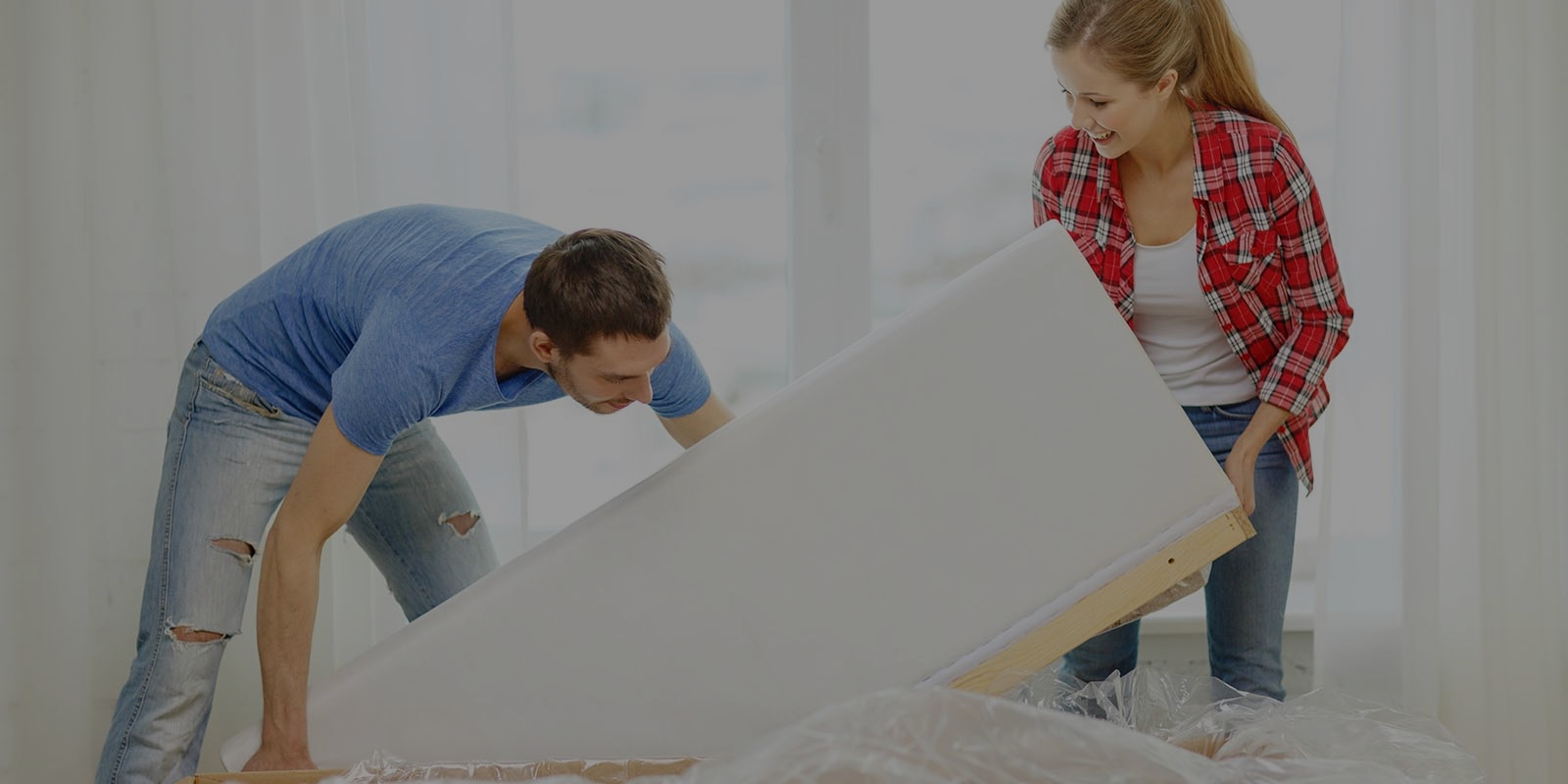Couch Maintenance Mastery: Long-Term Storage Secrets
Posted on 17/06/2025
Couch Maintenance Mastery: Long-Term Storage Secrets
When it comes to home furnishings, sofas and couches often represent significant investments--both in terms of style and comfort. Whether you're moving, renovating, or simply redecorating, proper couch storage can make the difference between a well-preserved piece and a costly mistake. In this comprehensive guide, we'll unlock the secrets to maintaining your couch for long-term storage, sharing expert tips, best practices, and clever hacks you should know.
Couch Storage Mastery: Why Is It Important?
You may wonder, "Why spend time on couch maintenance before storage?" The answer lies in the costly consequences of neglect. A poorly-stored couch can suffer from:
- Mildew and mold growth
- Infestation by pests
- Permanent fabric discoloration
- Structural damage to frames and cushions
- Unpleasant odors and stains

1. Preparing Your Couch for Long-Term Storage
1.1 Deep Clean Every Surface
A thorough cleaning is the first step to superior sofa storage. Lingering crumbs, sweat, oils, and pet fur can attract pests or foster bacterial growth.
- Vacuum all cushions, frames, and beneath the couch: Use a vacuum with an upholstery attachment. Pay attention to cracks and seams.
- Treat stains immediately: Gentle soap and warm water can remove most stains. For stubborn spots, use a manufacturer-approved upholstery cleaner.
- Professional cleaning: For delicate fabrics like velvet or silk, consider hiring professional upholstery cleaners before storage.
1.2 Disassemble When Possible
Removing legs or separating sections reduces the risk of damage during transport and saves space. Keep all screws and fittings in a labeled bag, then tape them to the underside of the frame (using masking tape) for easy reassembly.
2. The Right Place: Ideal Storage Locations
2.1 Climate Control Is Key
Temperature and humidity fluctuations can wreak havoc on your couch's materials. Wooden frames, foam cushions, and upholstery all respond poorly to dampness or heat.
- Choose a climate-controlled storage unit for maximum protection.
- If storing at home in a garage or basement, use dehumidifiers or air conditioning to maintain stable conditions.
- Never store a couch outdoors or in a shed, where exposure to rain, extreme cold, or sunlight can cause irreversible damage.
2.2 Elevate and Isolate
Moisture from concrete floors can seep up and ruin furniture over time. To master long-term sofa preservation:
- Lay down waterproof tarps or heavy-duty plastic sheeting on the storage floor.
- Place wooden pallets or blocks under each leg and support area, ensuring air circulates around the couch.
- Leave a gap between the couch and walls to prevent condensation buildup.
3. Wrapping Techniques: How to Protect the Couch
3.1 Choose Breathable Materials
Plastic wrap can trap moisture, resulting in mildew. For best furniture storage results:
- Use cotton sheets, muslin, or specialized furniture covers to wrap the couch securely.
- Avoid tightly wrapping in standard plastic--if you must use it, leave air vents or pair with silica gel desiccants to absorb moisture.
3.2 Cushion Care
Remove loose cushions and store them separately, preferably in cotton bags. Place baking soda or activated charcoal nearby to prevent musty odors.
- Do not stack heavy items on top of stored cushions.
- For memory foam, lay flat to prevent misshaping.
- Label and photograph each part if your couch is modular for easier reassembly.
4. Pest Prevention Tactics
Pests such as mice, moths, and beetles are notorious for infesting stored upholstered furniture.
- Strategically place cedar blocks, lavender satchels, or moth balls (use cautiously) around the couch for natural repellent.
- Consider a light application of fabric-safe insect spray, especially for long-term storage (check compatibility with your upholstery).
- Regularly inspect the storage area for droppings, webbing, or chewing marks.
5. Preventing Odors and Mold Growth
5.1 Utilize Desiccants and Airflow
Moist air is the enemy of long-term couch conservation. Here's how to avert bad smells and the threat of mold:
- Insert silica gel packs in and around the couch and cushions.
- Keep storage boxes and furniture slightly apart to allow free air movement.
5.2 Avoid Common Mistakes
- Don't: Use scented sprays or air fresheners that can stain or degrade fabric long-term.
- Do: Schedule regular checks--every few months, open storage containers, and sniff for early signs of trouble.
6. Insurance and Documentation
Even with perfect preparation, unforeseen events like floods, fires, or theft can occur. Before storing, master these furniture safeguarding secrets:
- Photograph your couch from all angles, documenting existing wear, tear, or damage.
- Save purchase receipts, appraisal documents, and care labels.
- Contact your renter's or homeowner's insurance to verify coverage for stored belongings.
- For valuable antiques or designer couches, consider specialized furniture insurance.
7. Retrieving Your Couch: Unpacking & Restoration Tips
7.1 Safe Transport Out
When bringing the stored sofa back home:
- Carry gently, using multiple people for heavy couches to avoid bending or straining frames.
- Remove plastic and covers in a well-ventilated area, outdoors if possible, to allow fresh air circulation.
7.2 Cleaning and Reassembly
- Vacuum surfaces and use a fabric refresher suitable for your upholstery.
- Wipe down non-upholstered parts (legs or arms) with mild cleaner.
- Reinstall legs, arms, or modular units following original photos and labels.
- Check for pest droppings, dings, or mold--treat quickly if found.
Top Mistakes to Avoid in Couch Storage
- Skipping the cleaning process: Dirt and oils can set during storage, causing stains and degeneration.
- Using the wrong wrapping materials: Airtight plastic equals trapped moisture--and mildew.
- Placing the couch against damp walls or directly on concrete: Promotes mold and wood rot.
- Storing in extreme temperatures or high humidity: Can warp wood and break down glue adhesives.
- Forgetting pest control measures: A single mouse or moth can ruin your investment.
- Neglecting regular checks: Problems caught early are easier to fix than letting them fester for years.

Couch Storage Frequently Asked Questions
- How long can a couch last in storage?
When properly prepared and stored, high-quality couches can last several years--sometimes up to a decade--without significant deterioration. - Should I store my couch upright or flat?
Flat is ideal to protect the frame and padding, but upright can work if space is tight. Never balance on one end or stack other items on top. - Do leather sofas need special attention?
Yes--use leather conditioner before storage and avoid plastic wraps. Ensure ventilation and dust regularly. - Can I store a couch in a non-climate-controlled unit?
Not recommended for more than a few months. Excess heat, cold, or humidity will accelerate aging and risk mold.
Conclusion: Achieve Couch Maintenance Mastery
With the right approach, long-term couch storage becomes a breeze--not a risk. Caring for your sofa means safeguarding it from heat, humidity, pests, and time. With these couch preservation secrets, you can ensure that your favorite furniture remains fresh, clean, and ready to enhance your home for years to come.
Remember: Preparation, smart storage choices, regular checks, and correct unpacking create the foundation of furniture longevity. Now you have all the knowledge you need to master couch maintenance for long-term storage. Start protecting your prized sofa today!







